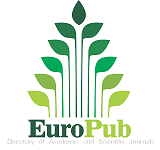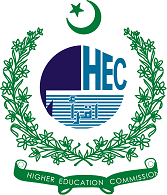Communicating Climate Risk Effectively? Editorial Coverage of Climate Change in Leading Urdu Language Newspapers from September 2018 to August 2021
DOI:
https://doi.org/10.58932/MULA0007Keywords:
Urdu language, newspapers, climate change, editorials, content analysis, framing, extended parallel process model, United NationsAbstract
Problem Statement: There is limited research in context of coverage of climate change in the vernacular press like Urdu journalism and the study fills the gap. The studies which are conducted in context of Pakistan have focused on limited variables for analysis.
Aims and Objectives: The objectives of the study are to research the effects and efficacy coverage of climate change in the editorials of leading Urdu language newspapers of Pakistan.
Theoretical Framework: The theoretical framework comprises of triangulation for the Extended Parallel Process Model (EPPM) and framing theory.
Methodology: The method which is used for analyzing the contents of newspapers in quantitative content analysis. The universe for the study is 3 years of editorial coverage of climate change in the Roznama Jang and the Roznama Express from September 2018 to August 2021.The units of analysis are lead editorials and the sub-editorials.
Results/Findings: The study finds that there was limited editorial coverage of climate change in the Urdu language newspapers of the Roznama Jang and the Roznama Express (n = 88). The Roznama Express covered more editorials than the Roznama Jang but both the newspapers had editorial coverage in the sub-editorial section. However, the Chi-square test of independence by using Statistical Package for Social Sciences (SPSS) version 25, did not inform any significant difference in the Roznama Jang and the Roznama Express for the editorial coverage of the effects and the efficacy towards climate change. The Roznama Express seemed to provide balance by covering both the effects and the efficacy levels towards climate change which means that the newspaper had effectively communicated the risk of climate change.
Conclusion: The study concludes that the newspaper editorials did not focus on the effects of climate change on public health and self-efficacy towards climate change and here is scarce coverage related to coverage of climate change in the editorial section of newspaper which needs attention of editorial board or vernacular press
Recommendations: The editors of the newspapers will have to make news stories by keeping into consideration the agendas of the effects of climate change on public health and the self-efficacy towards climate change.
References
Ali, Z. S. (2010). Pakistan: Vulnerability, Needs and Neglect. In E. Eide, R. Kunelius, & V. Kumpu (Eds.), Global climate - local journalisms: a transnational study of how media make sense of climate summits. Projektverlog.
Ali, Z. S. (2014). Visual representation of gender in flood coverage of Pakistani print media. Weather and Climate Extremes, 4, 35–49. https://doi.org/10.1016/j.wace.2014.04.001
Ares, E. (2021). COP26: the international climate change conference, Glasgow, UK. House of Commons Library, October, 1–21. https://researchbriefings.files.parliament.uk/documents/CBP-8868/CBP-8868.pdf
Arts, B., & Rudig, W. (1995). Negotiating the “Berlin Mandate’’: reflections on the first ‘Conference of the Parties’’ to the UN Framework Convention on Climate Change.’” Environmental Politics, 4(3), 481–487. https://doi.org/10.1080/09644019508414218
Asadnabizadeh, M. (2019). Analysis of Internal Factors of the Swing States in the International Climate Change Negotiations: A Case Study of Poland in COP24. American Journal of Climate Change, 08(02), 263–283. https://doi.org/10.4236/ajcc.2019.82015
Bajwa, A., Iftikhar, I., & Sultana, I. (2020). Natural Disaster Reporting: A Content Analysis of Locust Infestation Coverage in Pakistani Newspaper. Global Regional Review, V(IV), 96–105. https://doi.org/10.31703/grr.2020(v-iv).10
Baran, S. J., & Davis, D. K. (2015). Mass Communication Theory Foundations, Ferment, and Future. In Cengage Learning (Seventh). Cencage Learning.
Barri, F. A., & Shahzad, M. (2022). The Editorial Coverage on Climate Change in Context of Other Emerging Environmental Issues: A Comparative Analysis of English and Urdu Print Media of Pakistan. Global Regional Review, 8(2), 211–220. https://doi.org/10.31703/grr.2022(vii-ii).20
Bolsen, T., & Shapiro, M. A. (2018). The US News Media, Polarization on Climate Change, and Pathways to Effective Communication. Environmental Communication, 12(2), 149–163. https://doi.org/10.1080/17524032.2017.1397039
Boykoff, M. T., & Boykoff, J. M. (2004). Balance as bias: Global warming and the US prestige press. Global Environmental Change, 14(2), 125–136. https://doi.org/10.1016/j.gloenvcha.2003.10.001
Boykoff, M. T., & Boykoff, J. M. (2007). Climate change and journalistic norms: A case-study of US mass-media coverage. Geoforum, 38(6), 1190–1204. https://doi.org/10.1016/j.geoforum.2007.01.008
Breidenich, C., Magraw, D., Rowley, A., & Rubin, J. W. (1998). The Kyoto Protocol to the United Nations Framework Convention on Climate Change. American Journal of International Law, 92(2), 315–331. https://doi.org/https://doi.org/10.2307/2998044
Christoff, P. (2008). The Bali roadmap: Climate change, COP 13 and beyond. Environmental Politics, 17(3), 466–472. https://doi.org/10.1080/09644010802065807
Cohen, B. C. (1963). The Press and Foreign Policy. Princeton University Press.
Conference of the Parties. (2020). United Nations Framework Convention on Climate Change.
Dessai, S., Schipper, E. L. F., Corbera, E., Haxeltine, A., Kjellén, B., & Gutiérrez, M. (2004). Tyndall Briefing Note No . 11 Challenges and Outcomes at COP-9. Tyndall Center for Climate Chnage Reserach, 11.
Dirikx, A., & Gelders, D. (2010). To frame is to explain: A deductive frame-analysis of Dutch and French climate change coverage during the annual UN conferences of the parties. Public Understanding of Science, 19(6), 732–742. https://doi.org/10.1177/0963662509352044
Dotson, D. M., Jacobson, S. K., Kaid, L. L., & Carlton, J. S. (2012). Media coverage of climate change in Chile: A content analysis of conservative and liberal newspapers. Environmental Communication, 6(1), 64–81. https://doi.org/10.1080/17524032.2011.642078
Eide, E., & Ytterstad, A. (2011). The tainted hero: Frames of domestication in Norwegian press representation of the Bali Climate Summit. International Journal of Press/Politics, 16(1), 50–74. https://doi.org/10.1177/1940161210383420
Entman, R. M. (1993). Framing: Toward Clarification of a Fractured Paradigm. Journal of Communication, 43(4), 51–58. https://doi.org/10.1111/j.1460-2466.1993.tb01304.x
Feldman, L., & Hart, P. S. (2018). Climate change as a polarizing cue: Framing effects on public support for low-carbon energy policies. Global Environmental Change, 51, 54–66. https://doi.org/10.1016/j.gloenvcha.2018.05.004
Feldman, L., Hart, P. S., & Milosevic, T. (2015). Polarizing news? Representations of threat and efficacy in leading US newspapers’ coverage of climate change. Public Understanding of Science, 26(4), 481–497. https://doi.org/10.1177/0963662515595348
Feldman, L., & Sol Hart, P. (2018). Broadening exposure to climate change news? How framing and political orientation interact to influence selective exposure. Journal of Communication, 68(3), 503–524. https://doi.org/10.1093/joc/jqy011
Fisher, D. R. (2010). COP-15 in Copenhagen: How the merging of movements left civil society out in the cold. Global Environmental Politics, 10(2), 11–17. https://doi.org/10.1162/glep.2010.10.2.11
Ghezloun, A., Saidane, A., & Merabet, H. (2017). The COP 22 New commitments in support of the Paris Agreement. Energy Procedia, 119, 10–16. https://doi.org/10.1016/j.egypro.2017.07.040
Guerreiro, A. J. V. (1999). Adoption of the report of the Conference of the Parties on its Fifth Session: Draft Report of the Parties on its fifth session.
Hansen et al. (2022). Global Temperature in 2020 (Issue January). https://mailchi.mp/caa/global-temperature-in-2020?e=670df34344
Hansen, J., Fung, I., Lacis, A., Rind, D., Lebedeff, S., Ruedy, R., & Russell, G. (1988). Global Climate Changes as Forecast by Goddard Institute for Space Studies three dimensional model. Journal of Geophysical Research, 93(D8), 9341–9364. https://doi.org/https://doi.org/10.1029/JD093iD08p09341
Hansen, J., Sato, M., Ruedy, R., Schmidt, G. A., & Lo, K. (2019). Global Temperature in 2018 and Beyond. http://data.giss.nasa.gov/gistemp/%0Ahttp://www.columbia.edu/~jeh1/mailings/2018/20180118_Temperature2017.pdf
Hart, P. S., & Feldman, L. (2014). Threat Without Efficacy? Climate Change on U.S. Network News. Science Communication, 36(3), 325–351. https://doi.org/10.1177/1075547013520239
Hase, V., Mahl, D., Schäfer, M. S., & Keller, T. R. (2021). Climate change in news media across the globe: An automated analysis of issue attention and themes in climate change coverage in 10 countries (2006–2018). Global Environmental Change, 70(September). https://doi.org/10.1016/j.gloenvcha.2021.102353
Hayes, A. F., & Krippendorff, K. (2007). Answering the call for a standard reliability measure for coding data. Communication Methods and Measures, 1, 77–89. http://digilib.unila.ac.id/11478/16/16. BAB II.pdf
Hayes, S., & O’Neill, S. (2021). The Greta effect: Visualising climate protest in UK media and the Getty images collections. Global Environmental Change, 71. https://doi.org/10.1016/j.gloenvcha.2021.102392
Hussain, M., Saleem, N., & Ishaq, N. (2019). Frames for United Nations Climate Change Conference 2015 Comparison of Elite Dawn and Popular Jang Newspapers Evidence from Pakistan. Pakistan Social Sciences Review, 3(I), 292–304. https://doi.org/10.35484/pssr.2019(3-i)21
Hussain, S., Khan, A., & Zubair Iqbal, M. (2022). Media reporting of climate change crisis in Pakistan: Identifying corrective strategies. Information Development. https://doi.org/10.1177/02666669221104612
Javed, M. N., Basit, A., & Hussain, T. (2020). Climate Change in the Mainstream Pakistani Press: Coverage and Framing Trends. Global Political Review, 1, 192–204. https://doi.org/10.31703/gpr.2020(v-i).22
Khor, M. (2013). Doha 2012: A Climate Conference of Low Ambitions. Economic and Political Weekly, 48(2), 18–21. https://doi.org/10.1111/1468-2346.00192
Khuhro, R. A., Adnan, H. M., Khan, M. H., & Asghar, R. (2020). Diversity of news sources in climate change reporting in pakistani press. Media Watch, 11(1), 191–205. https://doi.org/10.15655/mw/2020/v11i1/49756
Khuhro, R. A., Adnan, H. M., Khan, M. H., Junejo, Z. I., & Aljiuaid, H. (2020). Representation of News Sources’ Gender in Climate Change Reporting in Pakistani Press. Global Media Journal, 17(33), 191–205. https://www.globalmediajournal.com/open-access/representation-of-news-sources-gender-in-climate-change-reporting-in-pakistani-press.php?aid=87634
Khuhro, R. A., Adnan, M. B. H., Junejo, Z. I., & Khan, M. H. (2020). Advertiser Pressure: A Climate Change Content Agenda-Cutting Paradox in Pakistani Media. Media Education (Mediaobrazovanie), 60(4), 664–674. https://doi.org/10.13187/me.2020.4.664
Krippendorff, K. (2004). Reliability in Content Analysis. Human Communication Research, 30(3), 411–433. https://doi.org/10.1111/j.1468-2958.2004.tb00738.x
Kweku, D., Bismark, O., Maxwell, A., Desmond, K., Danso, K., Oti-Mensah, E., Quachie, A., & Adormaa, B. (2018). Greenhouse Effect: Greenhouse Gases and Their Impact on Global Warming. Journal of Scientific Research and Reports, 17(6), 1–9. https://doi.org/10.9734/jsrr/2017/39630
Laville, S. (2019). ‘Greta Thunberg Effect’ driving growth in carbon offsetting. The Guardian. https://www.theguardian.com/environment/2019/nov/08/greta-thunberg-effect-driving-growth-in-carbon-offsetting
Lovett, J. C., Hofman, P. S., Morsink, K., Torres, A. B., Clancy, J. S., & Krabbendam, K. (2009). Review of the 2008 UNFCCC meeting in Poznań. Energy Policy, 37(9), 3701–3705. https://doi.org/10.1016/j.enpol.2009.05.072
McCombs, M. E., & Shaw, D. L. (1972). The agenda-setting function of mass media. Public Opinion Quarterly, 36(2), 176–187. https://doi.org/10.1086/267990
Moncel, R. (2012). Unconstructive Ambiguity in the Durban Climate Deal of COP 17 / CMP 7. Sustainable Develeopment Law & Policy, 12(2). http://digitalcommons.wcl.american.edu/sdlp?utm_source=digitalcommons.wcl.american.edu%2Fsdlp%2Fvol12%2Fiss2%2F3&utm_medium=PDF&utm_campaign=PDFCoverPages
Newell, P., & Paterson, M. (1996). From Geneva to Kyoto: The second conference of the parties to the UN framework convention on climate change. Environmental Politics, 5(4), 729–735. https://doi.org/10.1080/09644019608414300
Nisbet, M. C. (2009). Communicating climate change: Why frames matter for public engagement. Environment: Science and Policy for Sustainable Development, 51(2), 12–23. https://doi.org/10.3200/ENVT.51.2.12-23
Obergassel, W., Arens, C., Beuermann, C., Hermwille, L., Kreibich, N., Ott, H. E., & Spitzner, M. (2020). Cop25 in search of lost time for action: An assessment of the Madrid climate conference. Carbon and Climate Law Review, 14(1), 3–17. https://doi.org/10.21552/cclr/2020/1/4
Obergassel, W., Arens, C., Hermwille, L., Kreibich, N., Mersmann, F., Ott, H. E., & Wang-Helmreich, H. (2018). The calm before the storm: An assessment of the 23rd Climate Change Conference (COP 23) in Bonn. Environmental Law and Management, 30(4), 104–113.
Ott, H. E., Brouns, B., Sterk, W., & Wittneben, B. (2005). It Takes Two to Tango - Climate Policy at COP 10 in Buenos Aires and Beyond. Journal for European Environmental & Planning Law, 2, 84–91. https://doi.org/10.1163/187601005x00147
Pahore, M. R., Memon, S., Hamid, N. A., & Ismail, A. B. (2021). Does Gender Differences Exist in Online Newspaper Consumption among Pakistani Youth? Jurnal The Messenger, 13(1), 81–93. https://doi.org/10.26623/themessenger.v13i1.2552
Pahore, M. R., Memon, S., & Khan, Q. (2021). Fall or Rise? Mapping the Development of Traditional and Digital Newspapers. Progressive Reserach Journal of Arts & Humanities (PRJAH), 3(1), 117–128.
Pallant, J. (2010). SPSS Survival Manual Survival Manual Pallant (4th ed.). McGraw-Hill Education. www.openup.co.uk/spss
Palmer, G. (1992). THE EARTH SUMMIT : WHAT WENT WRONG AT RIO ? Washington University Law Quarterly, 70(4).
Park, S. (2016). The power of presidency in UN climate change negotiations: comparison between Denmark and Mexico. International Environmental Agreements: Politics, Law and Economics, 16(6), 781–795. https://doi.org/10.1007/s10784-015-9293-6
Parker, C. F., Karlsson, C., Hjerpe, M., & Linnér, B. O. (2012). Fragmented climate change leadership: Making sense of the ambiguous outcome of COP-15. Environmental Politics, 21(2), 268–286. https://doi.org/10.1080/09644016.2012.651903
Rentz, H. (1999). Outcomes of the fourth conference of the parties to the convention on climate buenos aires, 2-13 November 1998. Energy and Environment, 10(2), 157–168. https://doi.org/10.1260/0958305991499496
Roberts, D. (2016). A global roadmap for climate change action: From COP17 in Durban to COP21 in Paris. South African Journal of Science, 112(5–6), 5–7. https://doi.org/10.17159/sajs.2016/a0158
Sabherwal, A., Ballew, M. T., van der Linden, S., Gustafson, A., Goldberg, M. H., Maibach, E. W., Kotcher, J. E., Swim, J. K., Rosenthal, S. A., & Leiserowitz, A. (2021). The Greta Thunberg Effect: Familiarity with Greta Thunberg predicts intentions to engage in climate activism in the United States. Journal of Applied Social Psychology, 51(4), 321–333. https://doi.org/10.1111/jasp.12737
Saryal, R. (2018). Climate Change Policy of India: Modifying the Environment. South Asia Research, 38(1), 1–19. https://doi.org/10.1177/0262728017745385
Savaresi, A. (2013). UNFCCC COP19: jJust Another Climate Change Conference. Environmental Policy and Law, 43(6), 284. http://www.iisd.ca/sdgs/owg5/25nov.html,http://www.iisd.ca/sdgs/owg5/26nov.htmlandhttp://www.iisd.ca/sdgs/owg5/27nov.html
Siña, M., Wood, R. C., Saldarriaga, E., Lawler, J., Zunt, J., Garcia, P., & Cárcamo, C. (2016). Understanding perceptions of climate change, priorities, and decision-making among municipalities in Lima, Peru to better inform adaptation and mitigation planning. PLoS ONE, 11(1), 1–13. https://doi.org/10.1371/journal.pone.0147201
Spradlin, T. J., & Givens, J. E. (2022). Framing climate change in local context: Newspaper coverage of climate change in three mountain towns in the intermountain west compared to national coverage. Newspaper Research Journal, 43(3). https://doi.org/https://doi.org/10.1177/07395329221106485
Sterk, W., Watanabe, R., Ott, H. E., & Wittneben, B. (2010). The Nairobi Climate Change Summit (COP 12 - MOP 2): Taking a Deep Breath before Negotiating Post-2012 Targets? Journal for European Environmental & Planning Law, 4(2), 139–148. https://doi.org/10.1163/187601007x00145
Vespa, M. (2002). Climate change 2001: Kyoto at Bonn and Marrakech. Ecology Law Quarterly, 29(2), 395–420. https://www.jstor.org/stable/24114263
Vihersalo, M. (2008). Communicating Climate Change: Discourses, Mediations and Perceptions (A. Carvalho (Ed.); Issue January). Centro de Estudos de Comunicação e Sociedade, Universidade do Minho Braga. http://www.lasics.uminho.pt/ojs/index.php/climate_change
Volkmer, I., & Sharif, K. (2018). Risk journalism between transnational politics and climate change. The Palgrave Macmillan Series in International Political Communication.
Witte, K. (1992). Putting the fear back into fear appeals: The extended parallel process model. Communication Monographs, 59(4), 329–349. https://doi.org/10.1080/03637759209376276
Xie, L. (2015). The Story of Two Big Chimneys: A Frame Analysis of Climate Change in US and Chinese Newspapers. Journal of Intercultural Communication Research, 44(2), 151–177. https://doi.org/10.1080/17475759.2015.1011593




